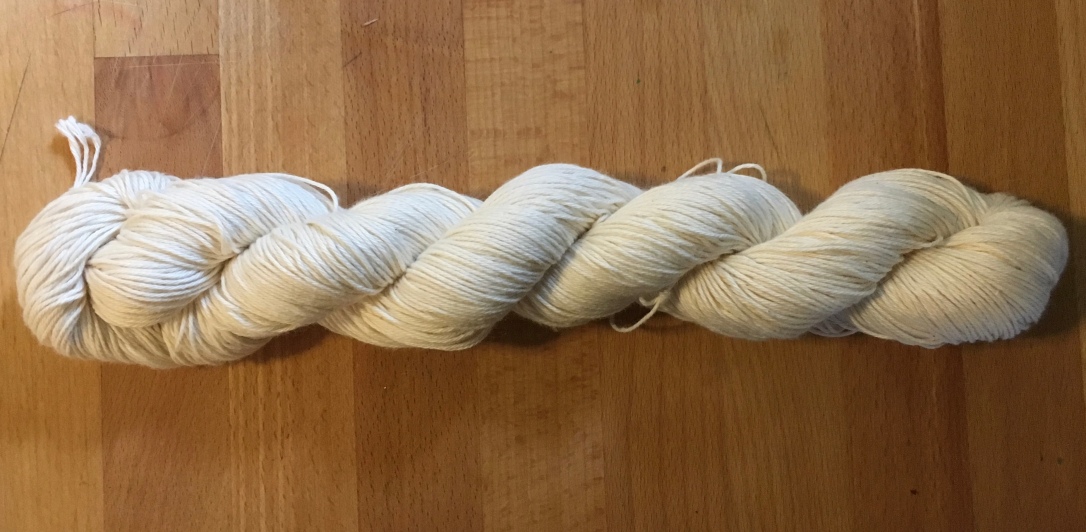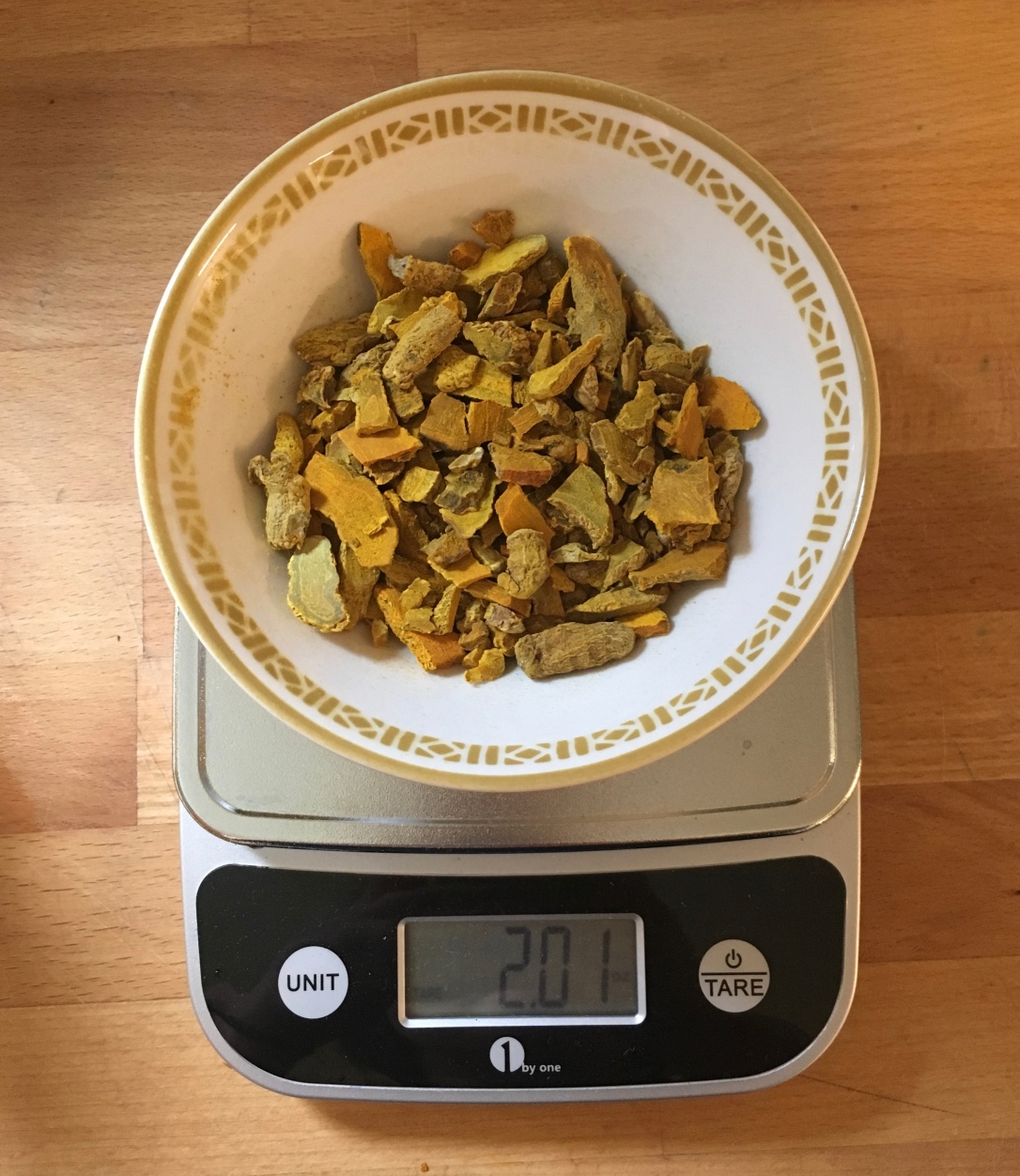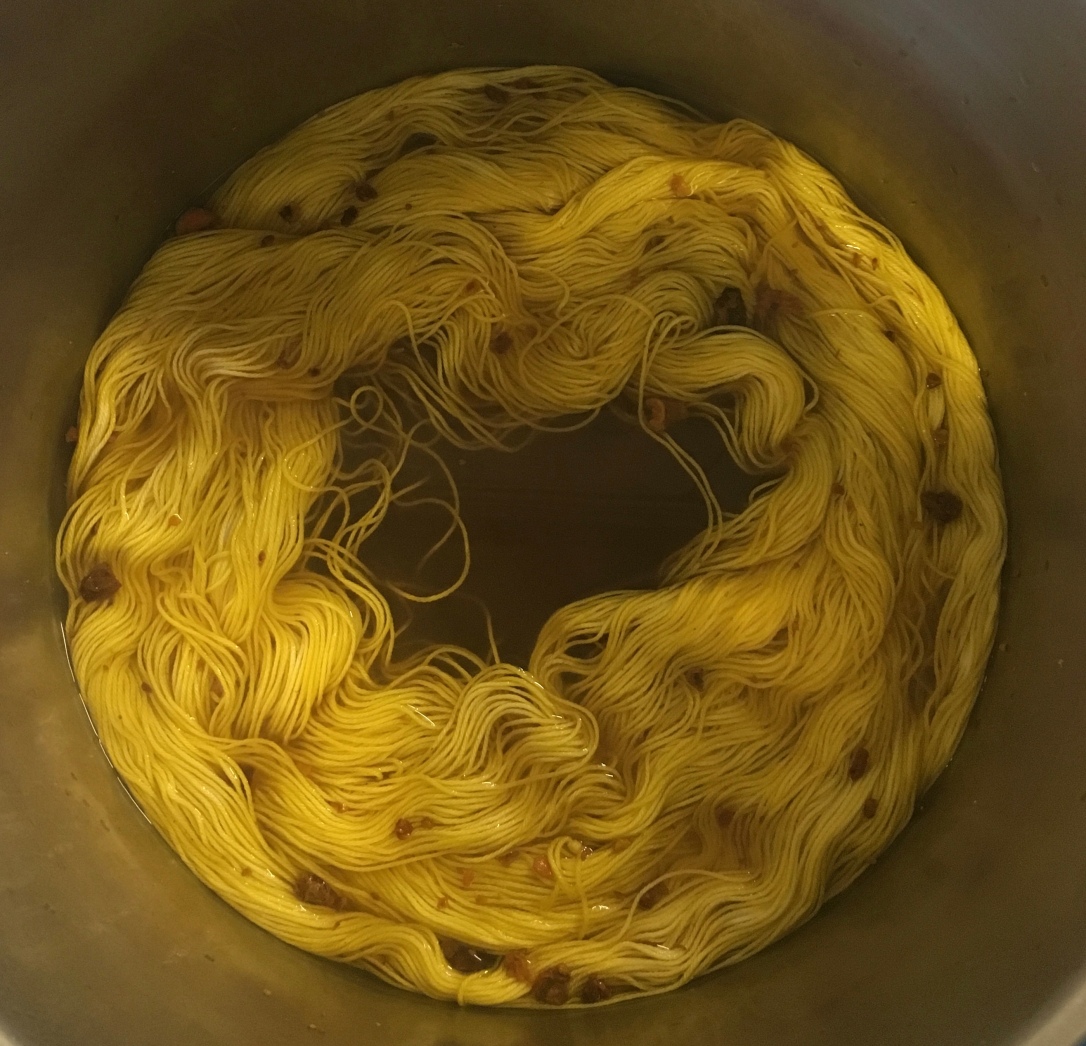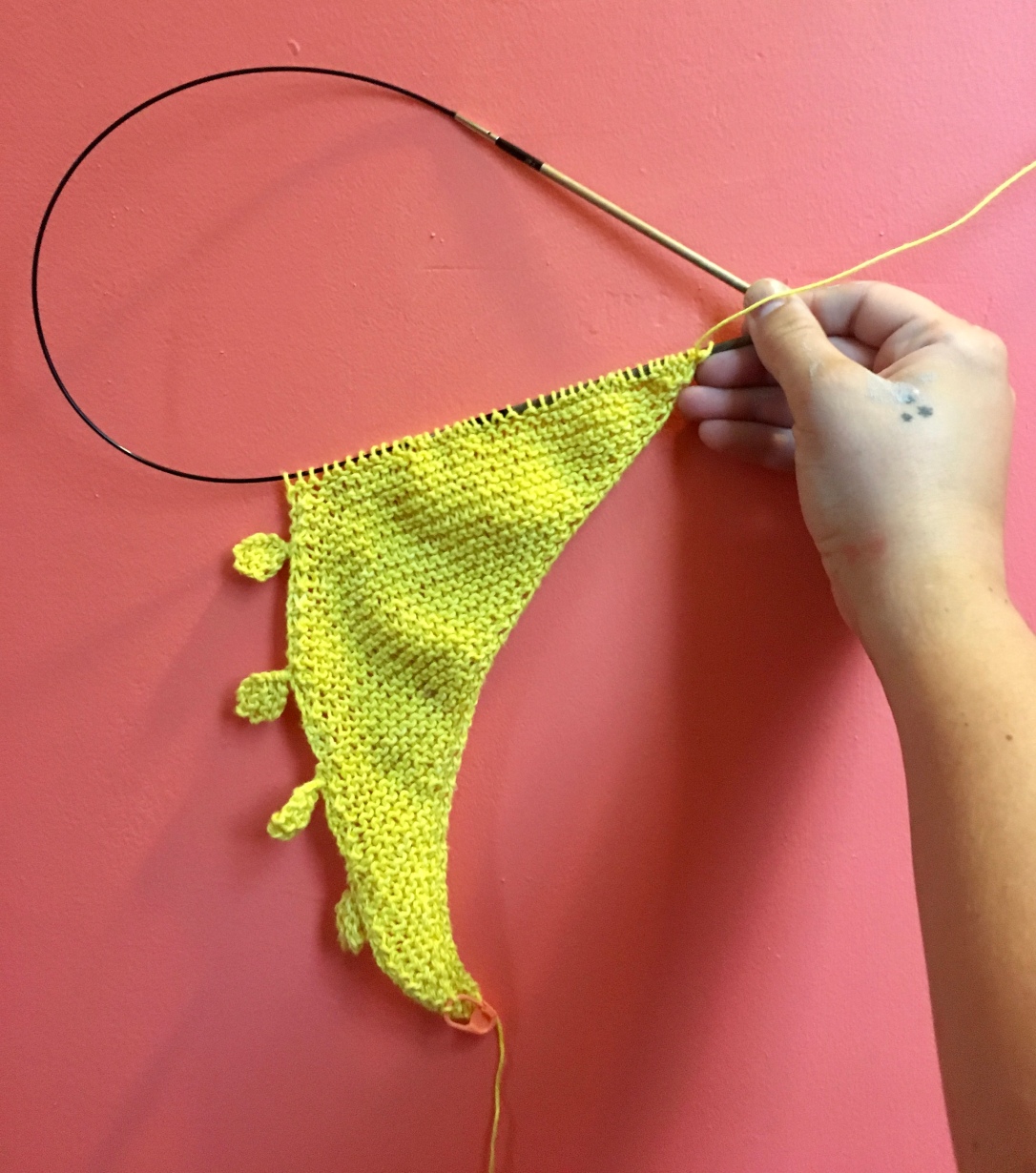As I’ve mentioned before, Kylen and I do all of our dyeing in our apartment kitchen here in Millvale, PA. Last summer, we moved into this cool little apartment because it was owned by the library, and I had effectively called “dibs” on being one of the tenants. Shortly after moving in, the space downstairs, also owned by the library, opened up as Tupelo Honey Teas, the cutest little tea shop in the world. Basically, within a matter of months, we found ourselves living in the set of a TV show… Between the library and the tea shop, Millvale became the perfect place for us.
Danielle, the owner of the tea shop is one of the sweetest, most supportive people in the world, and gets specifically excited about the topic of women doing cool things and following dope dreams. She has been a fan of Stitch Party since day one. When we told her we were going to start dyeing yarn she couldn’t wait to talk to us about using her spices and herbs in our dye to make unique color combinations.
We typically do all of our dyeing with acid dyes to make sure we can include all of our favorite colors in our colorways, but we have had a hard time getting a solid mustard yellow, so I went and talked to Danielle. She ran into her apothecary-style “blending room” and handed me a bag stuffed with “creepy chunks of tumeric” that were too big for her to use in her teas.
The other day, I came home from a long day of work full of screaming kids and unanswered emails, grabbed a skein of fingering weight cotton, and started researching how to dye yarn using turmeric. We’ve been trying to find the perfect shade of yellow, and the acid dyes haven’t given us the results we were looking for, so I was excited to see the results from the root-based dye.

 This was my first time working with natural dyes, and I found the article on The Slowpoke about natural dyeing with turmeric. While her instructions were for fresh or powdered turmeric, my creepy chunks worked just fine. I found the post really helpful and thorough, perfect for starting out!
This was my first time working with natural dyes, and I found the article on The Slowpoke about natural dyeing with turmeric. While her instructions were for fresh or powdered turmeric, my creepy chunks worked just fine. I found the post really helpful and thorough, perfect for starting out!
I started by soaking the skein in lukewarm water. The yarn I was using was a fingering weight pima cotton. While soaking I noticed that it wasn’t absorbing the water very evenly, so I had to make sure it was fully submerged the whole time. I ended up weighting it down with a glass jar filled with water inside of the soaking tub.
In the mean time, I measured out the turmeric and started preparing the pot for the dye bath. I measured out 2g of the root (or as close to 2g as I was able…) and threw it in the pot with 8 cups of water. Through a bit of trial and error, and a little research, Kylen and I have determined that when for the depth of shade we like in our fibers, each 100g skein gets 8 cups of water. I stuck with that measurement even though this was natural dye and not acid.

I cooked the turmeric until I saw a noticeable change in the water. Since this was cotton yarn, I wasn’t worried about felting the fiber, and I just threw the skein into the pot. It was amazing, I immediately saw a difference in the color of the yarn. I let the yarn cook with the root chunks for close to an hour, just to be sure I would achieve the color I wanted. I had read that quite a bit of the color will wash out in the first rinse, and I’m definitely not a pastel person… I wanted to be certain that I would like the color after all of this work.

I’m impatient, and checked the yarn approximately one thousand times before I decided to pull it and rinse. Again, since it was cotton yarn I didn’t need to bring it down to room temp before washing it out because there was no risk of the fibers felting. That was pretty sweet.
After a few cold water rinses and a soak with some wool soap, the color seemed pretty fast, and I felt confident that the yellow wasn’t budging. I let it dry in our tiny laundry room, and showed Kylen as soon as she got home. Danielle (from the tea shop) was ecstatic to see the her turmeric in a different form. She says her shop is haunted, I’m just hoping that the spices arent…
I was so anxious to start knitting with it, and cast on for Casapinka‘s Cubetcha Shawl ASAP. I am only about halfway done now, but it’s going to be a wardrobe staple, I can already tell.

So, my first attempt at natural dyeing went pretty well… I took detailed notes so that I could recreate my results, but I don’t know if I would do everything exactly the same the second time around. I think that powdered turmeric would make for a more even color, especially because it dissolves completely and you aren’t left with little root chunks in your skein. I love the color, but I wouldn’t classify it as mustard yellow. I read that you will get more mustard-y results when using wool, so I’m anxious to try that the next time… that might be perfect for our Shindig yarn…
Have any of you ever tried dyeing yarn with turmeric or other natural dyes? I am really interested in natural dyeing, specifically using things I may already have in the kitchen!

